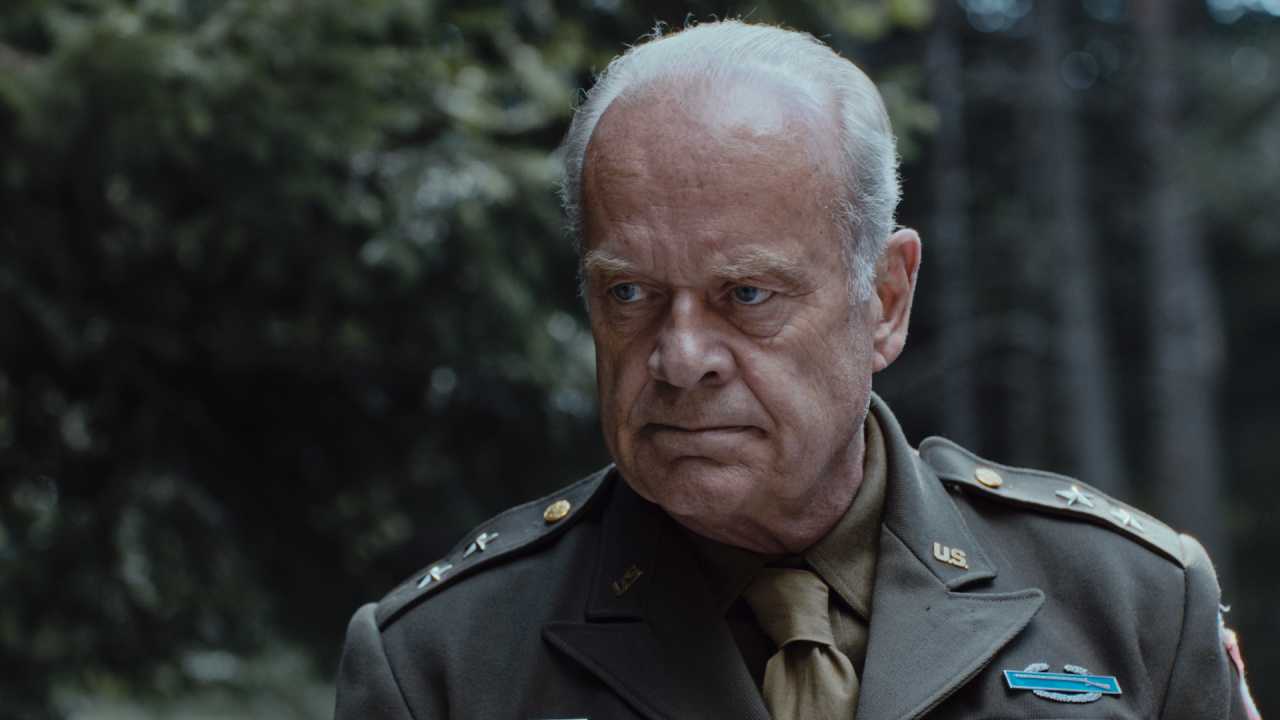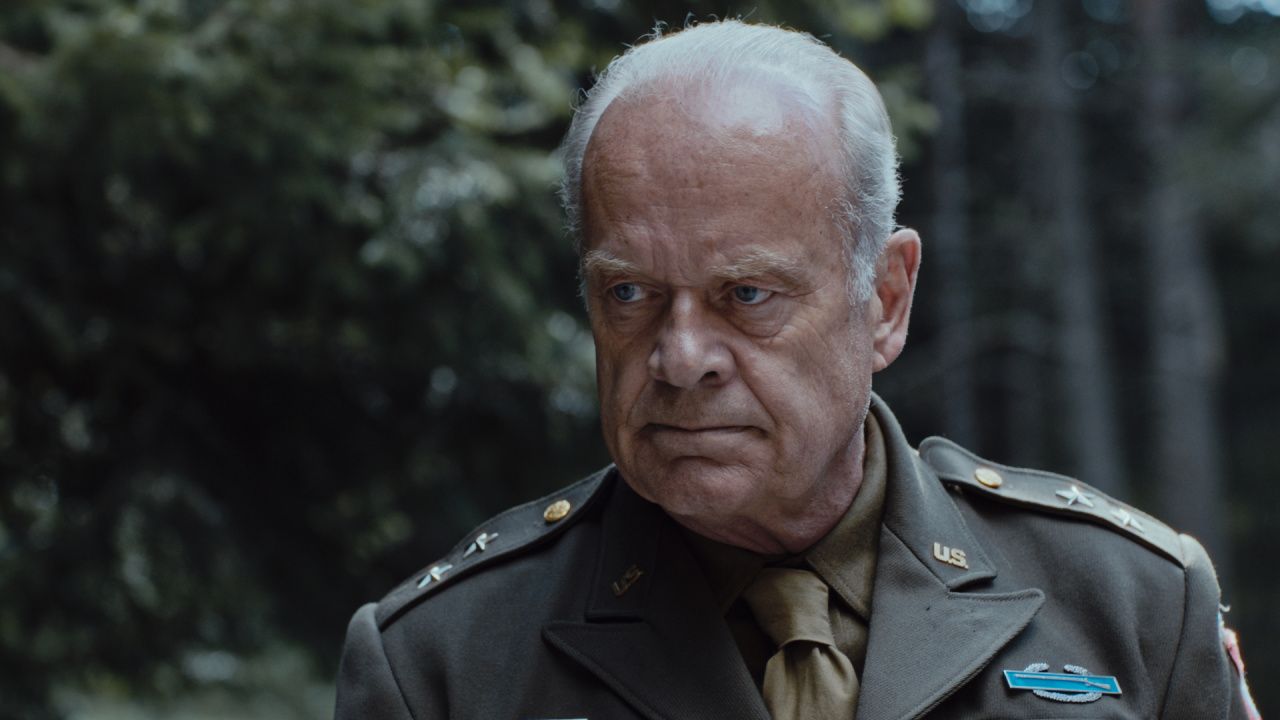
Kelsey Grammer as “Haskel” in the war/action film, ‘Murder Company’, a Maverick Film & Complex Corp release. Photo courtesy of Maverick Film & Complex Corp.
Opening in select theaters, On Demand and digital beginning July 5th is the new WWII movie ‘Murder Company’, which was directed by Shane Dax Taylor (‘The Best Man’). The movie stars Kelsey Grammer (‘X-Men: The Last Stand’ and ‘Transformers: Age of Extinction‘), William Moseley (‘The Chronicles of Narnia: The Lion, the Witch and the Wardrobe’), Joe Anderson (‘The Grey’), and Pooch Hall (‘Cherry’).
Moviefone recently had the pleasure of speaking with legendary actor Kelsey Grammer about his work on ‘Murder Company,’ his first reaction to the screenplay, his character, working with the young cast, and collaborating on set with director Shane Dax Taylor. Grammer also discussed reprising his role as Beast in ‘The Marvels’, how the make-up process has changed since ‘X-Men: The Last Stand’ and if he will appear in ‘Deadpool & Wolverine’.
Related Article: Kelsey Grammer Talks ‘Jesus Revolution’ and Playing Pastor Chuck Smith
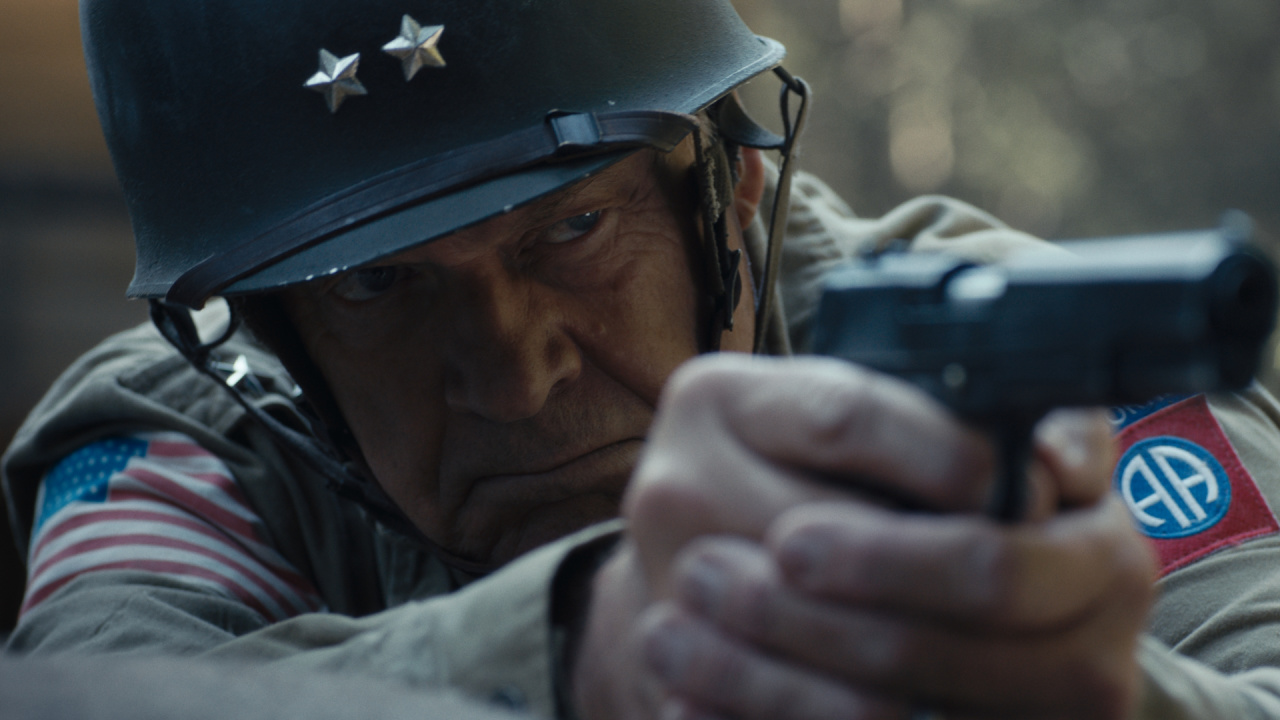
Kelsey Grammer as “Haskel” in the war/action film, ‘Murder Company,’ a Maverick Film & Complex Corp release. Photo courtesy of Maverick Film & Complex Corp.
Moviefone: To begin with, can you talk about your first reaction to the screenplay and why you wanted to be a part of this project and tell this specific story?
Kelsey Grammer: Well, joining any company usually means being invited, so they invited me, and then I went through it and gave it a cursory review at first. Then I thought, “Well, this seems kind of interesting,” so I went back to it and made the call to my guy and said, “What the hell, let’s set this up.” The only thing I found in the text, and this is not to point out anything, but my granddad was a World War II vet, and he never cursed in his life. There were a lot of four-letter words in the original script that I thought, “Well, my guy’s not going to say that stuff,” and they basically agreed. I spoke to the director, and he said that his granddad served with Patton. I said, “Do you remember him cursing a lot?” He said, “I don’t remember him doing it once.” I said, “That’s the guy this has to be.” Even though he may have an objection to what he’s being asked to do, he doesn’t express himself that way. It’s a different generation. Some of the soldiers, I think, do still talk that way. But to me it was important that I construct a character that still was that kind of a man.
MF: To follow up on something you just said, how often does it happen that you read a script and want to be involved in the project, but need to have a few things changed to make it work for you?
KG: It happens a lot. It happens all the time. What often happens is somebody will send me something and I’ll read it and I go, “Well, I liked it, but I don’t want to play that character. I want to play this other one.” Most of the time they’ll say, “Oh, that’s a great idea. We didn’t even think of it.” That’s happened a few times, and that’s more fun for me. I like to try to do stuff that isn’t a repeat of something I’ve done before. Granted, we stumble into things that are alike. I mean, I look like who I play all the time, and I don’t do a lot of big character makeup stuff except for Beast, but I tend to choose things that are outside of what I’ve done in the past.
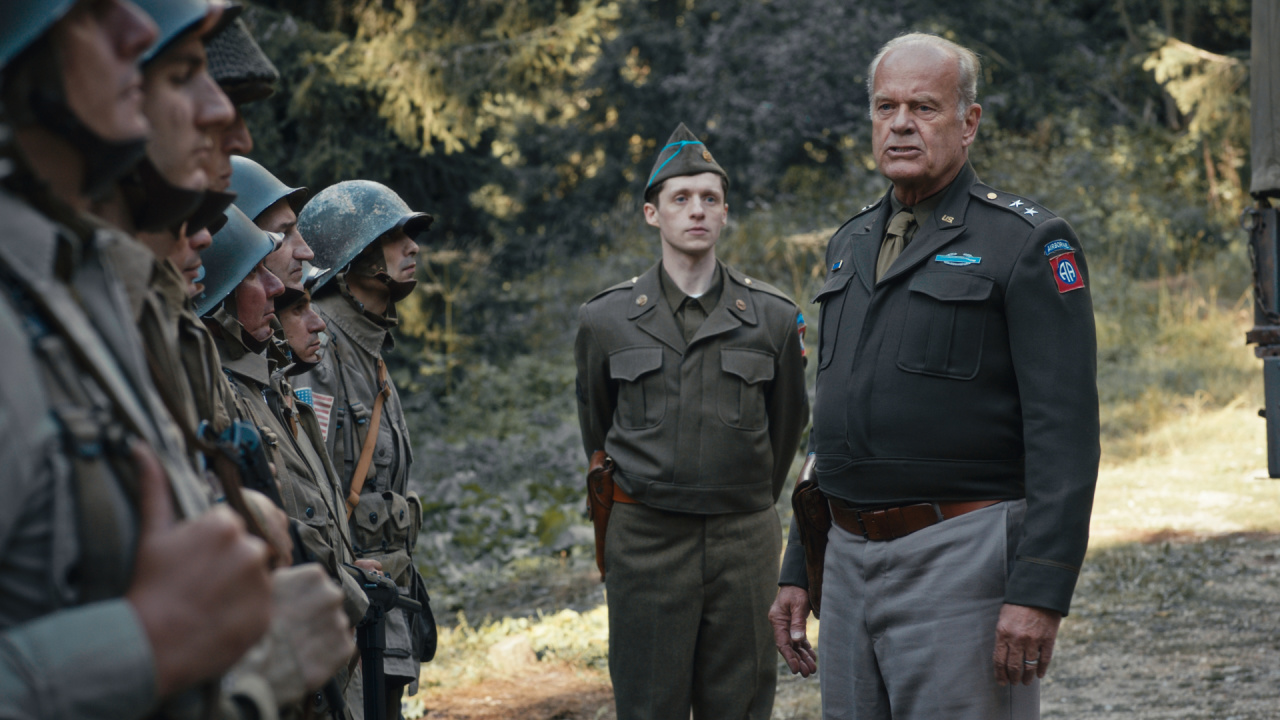
(L to R) James Wiles as “Verrill” and Kelsey Grammer as “Haskel” in the war/action film, ‘Murder Company’, a Maverick Film & Complex Corp release. Photo courtesy of Maverick Film & Complex Corp.
MF: Can you talk about your approach to playing General Haskel and his role in assigning this mission to the platoon?
KG: It’s a little bit of a made-up thing for me. I mean, I know that this is historically at least inspired by facts on the ground. I have a friend whose grandfather was part of one of these platoons, that ended up being pasted together out of the first invading force and did some stuff behind enemy lines. He told me about that. It was dramatic stuff, and I think some of this is lifted from those stories. The approach to the character was just always keep it true. Keep it true to what you think they are, and who you think they are. This guy, I think, was a highly principled man who was asked to do some unprincipled things, but under the circumstance of war and the circumstance of the enemy they were fighting, they knew they had to win and do some things that maybe you wouldn’t do except in wartime.
MF: When you are playing an Army general, does the costume do a lot of the work for you?
KG: Yeah. One of the best things you learn early on when you’re starting, the first time you do a costume drama, pretty much your costume tells you who the character is. I learned in time. When I started to do a lot of Shakespeare, I would go into the first fitting and see what I was going to look like, and I thought, “Oh, well, there he is. There’s the character.” There is a lot to it. It’s playing dress-up in the end.
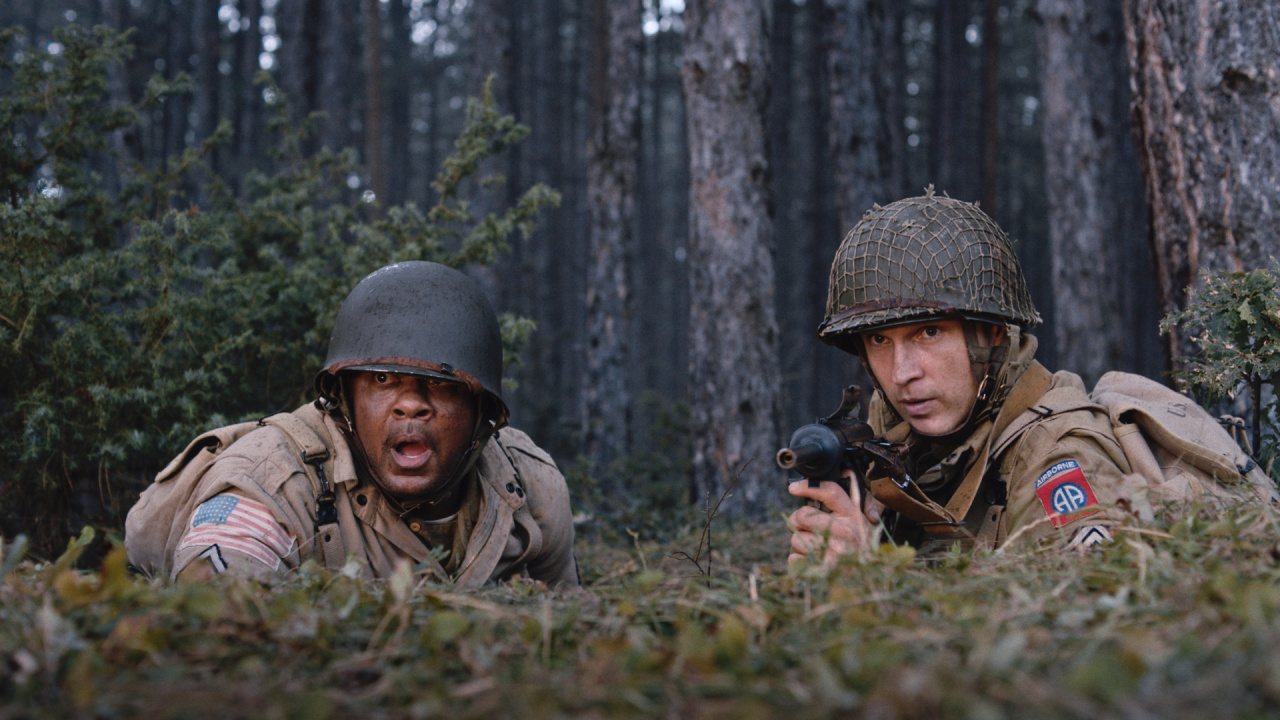
(L to R) Pooch Hall as “Coolidge” and William Moseley as “Southern” in the war/action film, ‘Murder Company,’ a Maverick Film & Complex Corp release. Photo courtesy of Maverick Film & Complex Corp.
MF: What was it like for you working with the rest of the cast and do you enjoy working with the next generation of actors?
KG: Well, so far so good. Listen, no one generation is immune from bad acting, but thank God, within every generation there are some good ones. I mean, arguably it’s an art form. Some people take shortcuts to it and think they can do it because it looks easy. The good ones make it look easy, but an art form is rarely something everybody can do. We may be overpopulated as a profession, but there are very few that do it well. When you get lucky enough to jump in with somebody who is good at it, it’s a real genuine experience and a joy. These guys were good.
MF: What was it like collaborating with director Shane Dax Taylor on set?
KG: Well, our first conversation was the one about our grandfathers, and it was simple. “Let’s not waste a lot of time.” That’s the way I like to work. Get in, get it over with, move on. Do a couple of takes if you need to. I mean, one of my favorite stories I repeat a lot is the John Huston story. The first take in ‘Prizzi’s Honor’, when there’s a big wedding scene. They shoot it once and he calls, “Cut, new deal.” Jack Nicholson turns to him and says, “Don’t you want to get one for coverage?” He said, “I’m not in the insurance business.” I like that. I like doing it once and moving on if you can.
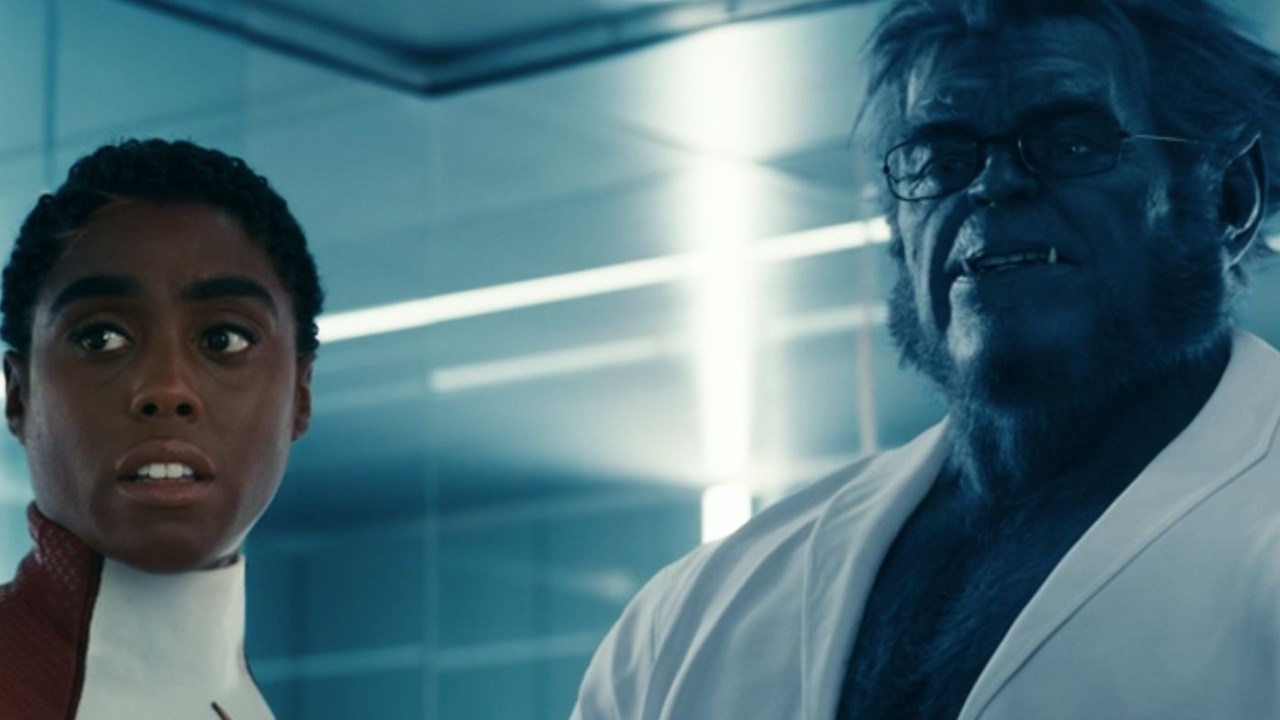
(L to R) Lashana Lynch and Kelsey Grammer in ‘The Marvels’. Photo: Marvel Studios.
MF: Finally, what was it like reprising your role as Dr. Henry McCoy (Beast) in ‘The Marvels’? Were you surprised to get the call and what was it like joining the MCU?
KG: Well, it was fantastic. The first one I did, they had a bicycle rack that was welded to a stanchion, that I stood there as they plastered my entire body. It was like four hours, and they said, “This is going to be a little bit difficult,” and it was, because after about an hour, I had absolutely no feeling in the lower quadrant of my body. I thought, “This is just weird.” When they took it off me, I couldn’t walk for a little bit. It was a very dramatic experience. The new one, I just went in, and they had a geodesic circle with a hundred cameras on it, and they all go off at the same time and they ask you not to blink. That’s almost impossible. It was fun to see this upgraded technology, because now what happened, when we did the latex and stuff, it looked that way. That was the process, but they would put all the plaster on and then it all became latex forms, and then they had made dozens of them for every day I was shooting. It would lay a lot between me and the camera, and now with the technology, it’s as though there’s a skin tone that’s blue. It’s radiant and translucent, and it makes the character, my character that’s shining through it, a little more available. It’s exciting to see. I watched the movie on a plane one day, and I was tired, so I drifted in and out, and toward the end of it I was just shot. I heard the voice of Beast, and it’s interesting. It’s a slightly different timbre than I’m used to hearing myself, and I went, “Whoa, wait a minute. I know that guy.” I realized it was me, of course. I caught a glimpse of it, and I thought, “Well, isn’t that something?” It came about just because they thought, “Well, you know what? We’re going to go back in time and bounce the universe around,” and I love that they have this creative outlook. The response was pretty much off the hook. People were like, “Whoa, it’s Beast.” It’s fun. Who knows? I’m certainly hopeful that we can maybe visit the role another time.
MF: I’m sure you can’t answer this question even if it is true, but I have to try. Will you be appearing in ‘Deadpool & Wolverine’?
KG: No. I probably can’t tell you … but no.
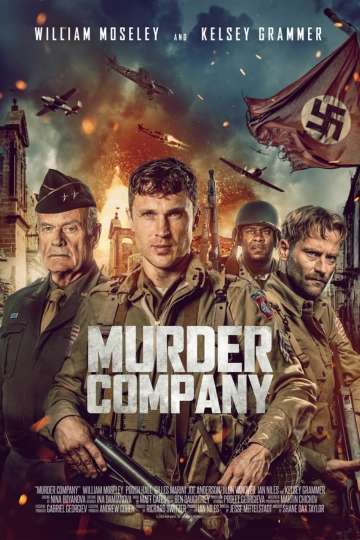
In the midst of the D-Day invasion, a group of US soldiers are given orders to smuggle a member of the French resistance behind enemy lines to assassinate a high-value… Read the Plot
What is the plot of ‘Murder Company’?
During the D-Day invasion, a group of US soldiers are given orders to smuggle a member of the French resistance behind enemy lines to assassinate a high-value Nazi target.
Who is in the cast of ‘Murder Company’?
- Kelsey Grammer as General Haskel
- Joe Anderson as Smith
- William Moseley as Southern
- Pooch Hall as Coolidge
- Gilles Marini as Daquin
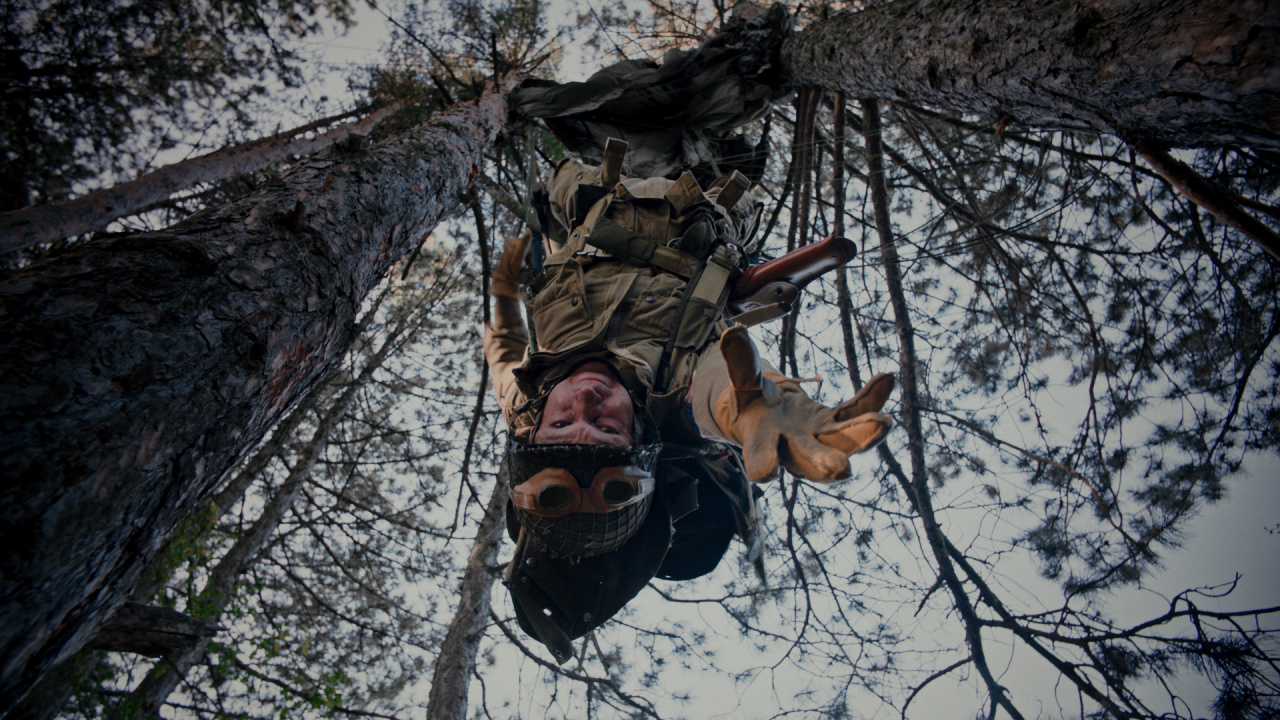
William Moseley as “Southern” in the war/action film, ‘Murder Company,’ a Maverick Film & Complex Corp release. Photo courtesy of Maverick Film & Complex Corp.
Other Kelsey Grammer Movies and TV Shows:
Buy Kelsey Grammer Movies on Amazon
Read the original article here



